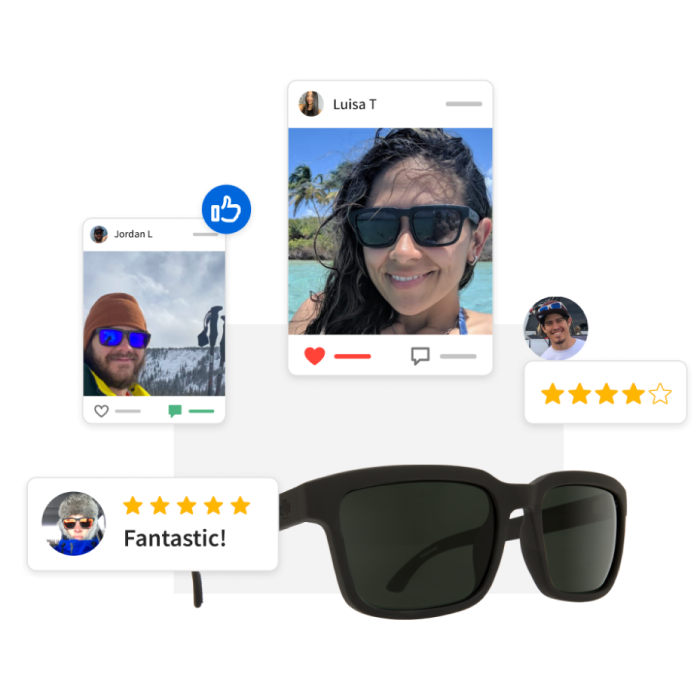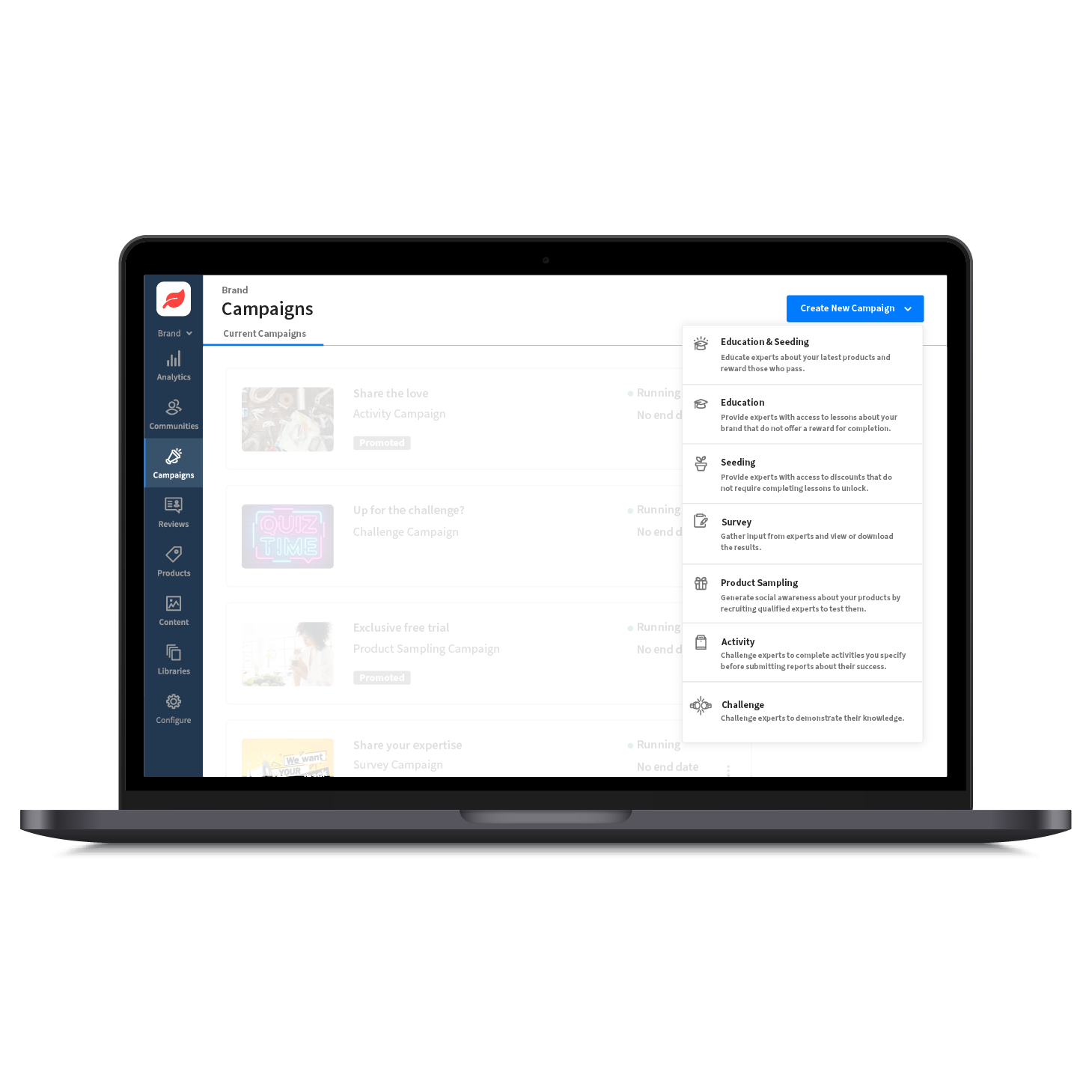How to collect reviews and photos from authentic everyday influencers.
How to collect reviews and photos from authentic everyday influencers.
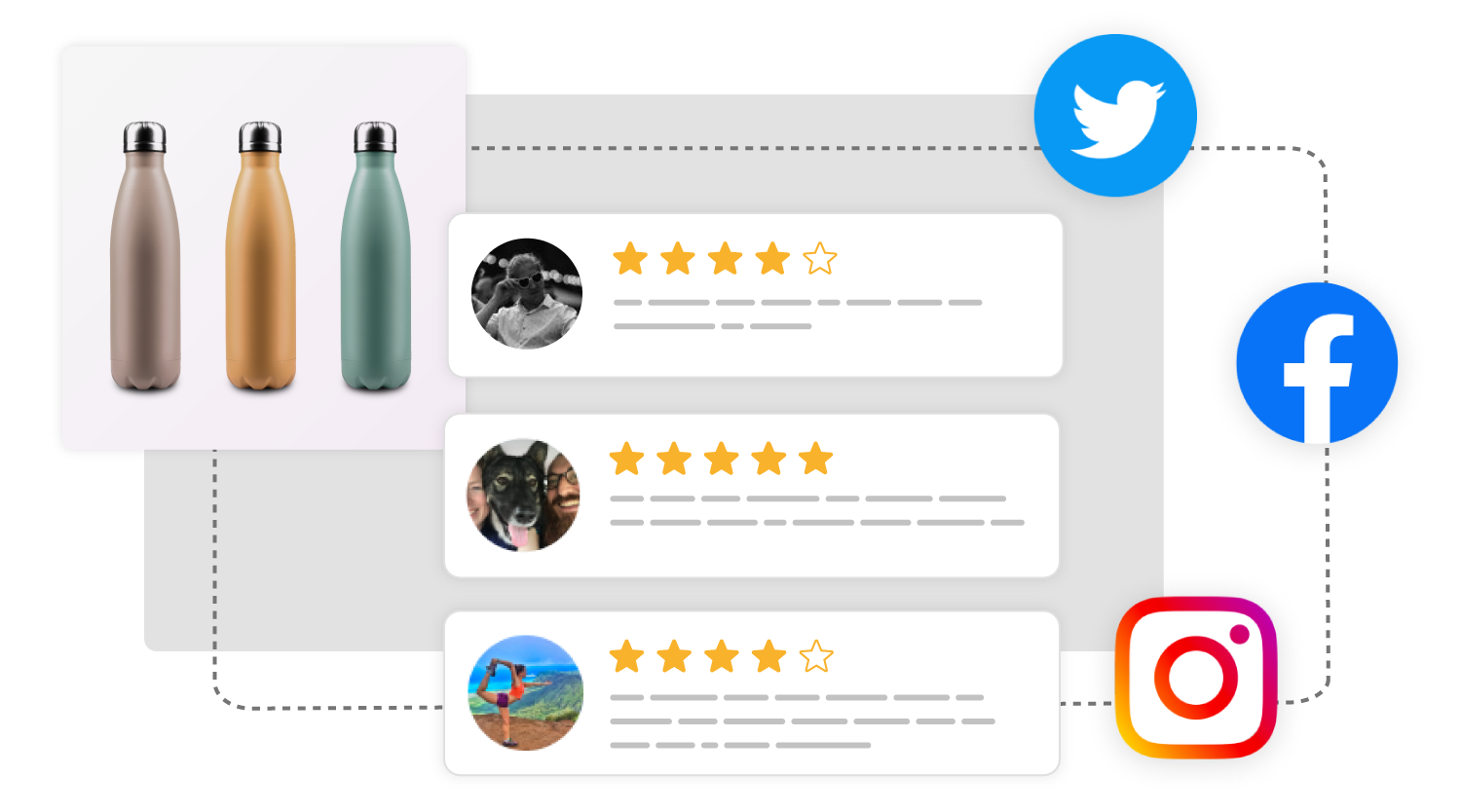
Product Sampling Campaigns allow you to hand-select samplers to trial free products and share their honest feedback.
Note: Access to Product Sampling Campaigns varies based on your Advocacy Platform subscription.
Sending out free products to influencers can be intimidating. There’s a financial cost to provide samples, the time needed to coordinate logistics and measure results. Not to mention the level of trust required when you “hand over the keys” to a free product.
But there’s a big payoff for doing sampling right. Sending free samples can help your target audience try before they buy, drive authentic social proof and enable you to build genuine relationships with a diverse group of brand advocates.
What is product sampling?
Product sampling is the practice of giving free samples to consumers, typically in exchange for them leaving an authentic and honest review and posting social media content.
On ExpertVoice, brands can use self-serve Advocacy Platform tools to recruit samplers, manage a custom product sampling campaign and collect authentic user-generated content such as reviews, videos, photos and social media content.
Why use ExpertVoice for product sampling?
Here are a few benefits of tapping into the ExpertVoice network of nearly 1 million active members for your next influencer marketing program.
- Reach a trusted audience: With Product Sampling Campaigns, you can introduce your products to influential audiences unfamiliar with your brand, from sales associates to credentialed members of professional organizations. By integrating sampling into your company’s budget, you can help new consumers discover your products and continue to learn about your target market.
- Strengthen your relationships with existing customers: Thank your loyal brand advocates with free products and invite them to learn more about your different product lines. Encourage product trials with an audience you already have a relationship with that understands your brand and increase their ongoing advocacy.
- Boost your online social proof: A successful sampling program collects authentic product reviews and customer photos which means you can go to market with credible user-generated content. With an ExpertVoice product sampling campaign, you can engage samplers beyond the campaign's lifecycle with community management tools. The UGC you receive from your sampling campaign on ExpertVoice is license-free and approved for use in every marketing channel.
Pros and cons of different sampling strategies
Here are a few different tactics companies use today to sample their products with prospective customers, along with our take on their benefits and pitfalls.
- Sample boxes: These are popular with brands and PR (public relations) companies looking to increase awareness of the latest must-have products. Sample boxes are either free for the receiver, come with a one-time fee or require a monthly subscription. Shipments usually have customized packaging, an “Instagrammable unboxing moment” and a personal thank-you note with recommended next steps. Paid subscription boxes with mystery bundles of product samples originated around 2010 and continue to evolve as shoppers’ preferences change.
- Pros: The sample box can contain one or more products and is delivered to a hyper-targeted audience. You can track their ROI through online reports if you provide samplers with a digital promotional code, campaign hashtag and clear next steps.
- Cons: Creating a branded sample box can take extra time, budget and resources to ensure samplers have the best possible experience. However, it’s best practice to establish long-term relationships with samplers and ensure it’s not an expensive, one-off marketing push.
- In-person sampling: Whether you’re distributing free products at an event, trade show, retail store or at another type of physical location, in-person sampling is the most traditional method. Typically, brands will recruit a brand ambassador team to learn key talking points and sample free products at specific high-foot-traffic locations. Like sample boxes, in-person sampling aims to drive product trials and future full-size purchases through coupons or promo codes.
- Pros: You allow people who pass by to “try before they buy” and create a fun in-person sampling environment. Sampling at events such as concerts, trade shows, farmer’s markets at retail or on the streets puts your products center stage.
- Cons: Hiring the right brand ambassadors and securing a sampling location can be a tall order. Often, there are constrictions based on the location, and you must rely on your ambassadors to show up, do their homework and track how many samples they distribute onsite.
- Samples for sale: Near the checkout registers at various retail locations, brands often offer smaller-sized samples of their product to drive trial at a lower price point. This tactic also works well on e-commerce sites through personalized suggested up-sells.
- Pros: For shoppers, the samples are a small add-on cost and affords some buyers to buy from more expensive brands, such as body fragrances. Depending on the product, smaller travel-size samples can be easier for them to trial and bring on the go.
- Cons: It may take additional funds and suppliers to create sample-size or mini travel-sized products. If selling in retail, you’ll have to compete for shelf space.
- Reimbursements: If shipping and fulfillment management is a burden, some companies ask consumers to purchase their products in-store. The sampler is reimbursed for its original cost in return for experiencing the product, sharing content online and uploading a copy of its receipt.
- Pros: This “cash back” option can be cost-effective for companies that sample large and heavy products or for products requiring specific sizes, such as apparel. You can also target specific individuals with a digital sampling program that offers reimbursement to ensure the right individuals are trying your products.
- Cons: The product must be worth the person’s time to purchase on their own time. People have busy schedules and can get distracted from their responsibilities with this sampling method. You must cross your fingers and rely on samplers to remember to purchase your product and complete their next steps.
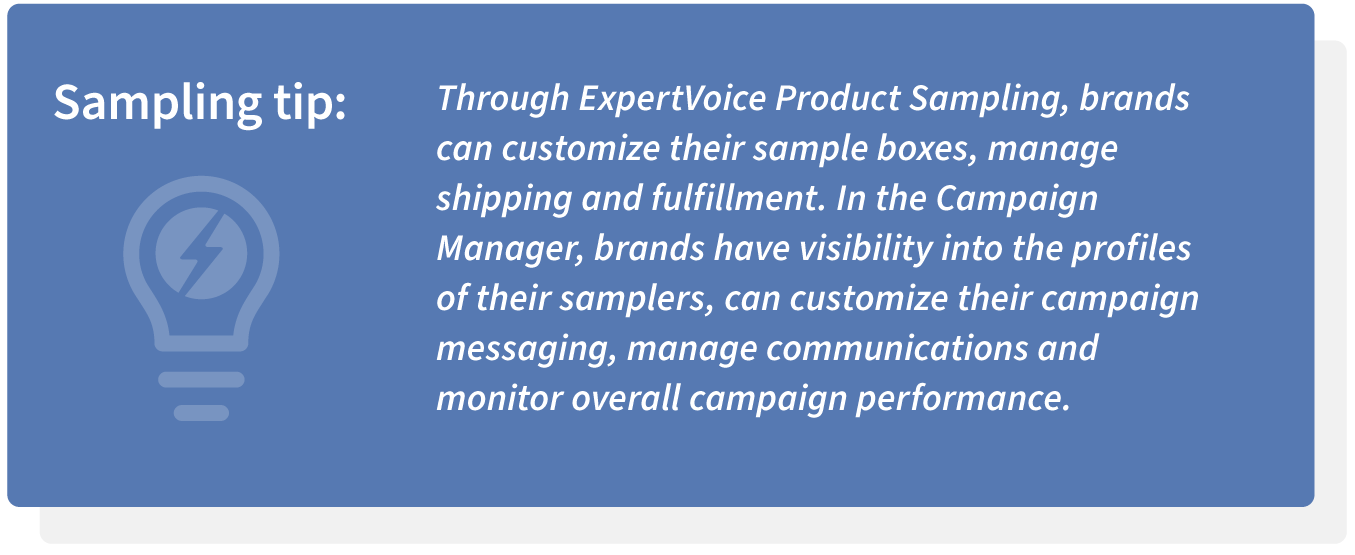
How to run a successful sampling program
Determine your objectives and expected output
You know your brand best. To ensure your product sampling campaign hits a home run, define your goals. It’s easy to skip this part, but critical to get the most out of your investment. Sampling can drive short-term success and boost year-round advocacy for your brand if done right.
Here are the types of questions you should be thinking about when determining your sampling strategy.
- What types of people are you hoping to work with? Think about samplers’ demographics, geographic locations, passions, qualifications and prior knowledge of your brand. It’s best practice to gather feedback from all types of individuals. Diversity, equality and inclusion should be top of mind when running your sampling program to ensure different voices are heard and represented through the content they share.
- What types of influence do you want your samplers to have? Weigh the importance of an active social media presence and offline influence. For example, while some samplers on the ExpertVoice platform may not have a big social media following, their word-of-mouth recommendations pack a mean punch and can drive up to 123% more sales.
- What types of products do you want to collect UGC for? Audit your best-sellers and highly trafficked products to ensure they have recent UGC. Then check which products have little to no reviews today that could use a social proof accelerator. Be certain you have enough inventory if you’d like to provide free samples for an up-and-coming product. When you’re ready, stick to offering each approved sampler one free sample or a pre-determined selection of samplers in an easy-to-access consolidated variety pack.
- Do you have the time to vet samplers? Don’t skimp on this part. Like any official brand deal, your product samplers should align with your company’s mission. Tools like ExpertVoice allow you to audit member profiles and their social media to ensure they’re active and share on-brand content. The ball’s in your court. Approve your top picks and respectfully decline the applicants who don’t meet your brand standards.
What types of content are you hoping to collect? Through product sampling campaigns, brands can collect incentivized product reviews, photos and videos. Remember that samplers come with personal perspectives and preferences; provide UGC guidelines and suggestions, but be comfortable giving them creative freedom in their shared content. And because video plays such an essential role in the consumer buying journey these days, especially for highly technical products or those requiring a bit more explanation, ask samplers to share at least one video. Video will bring your products to life and allow samplers to share their first-hand experience on camera.
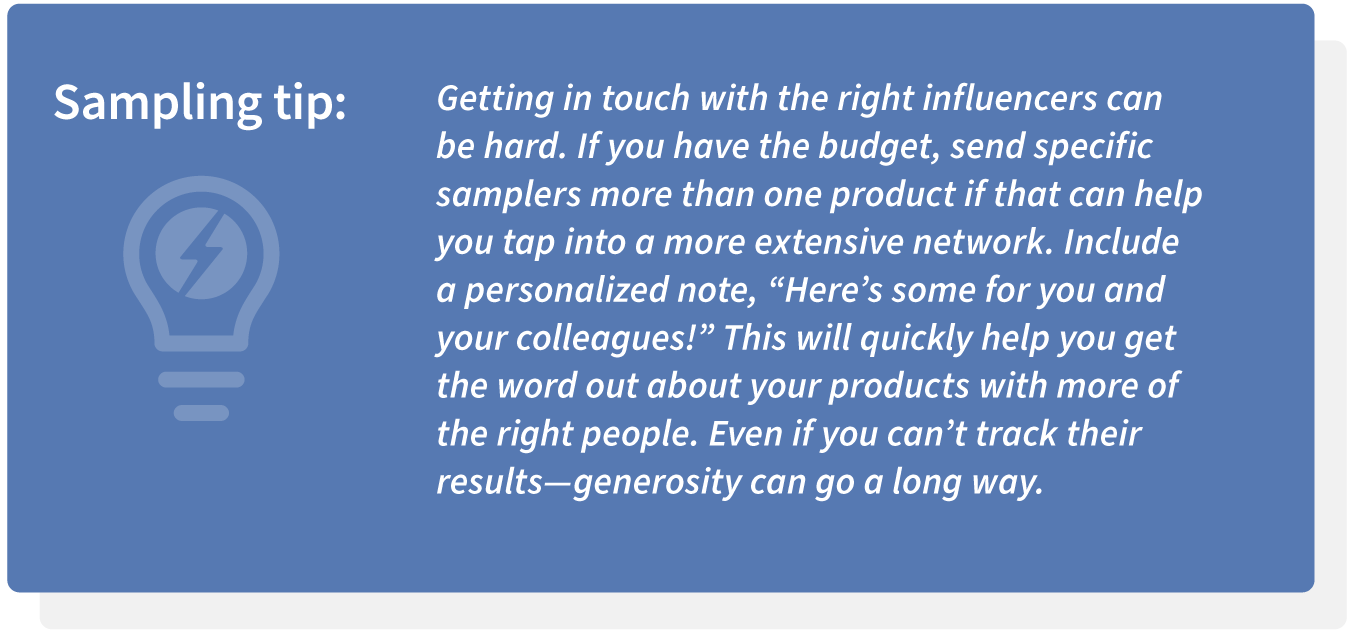
Step into the sampler’s shoes
Be intentional with the people you accept into your product sampling program. Because brands regularly connect with influencers in today’s marketing world, the bar is high for the type of experience and relationship collaborators expect. They don’t want their brand partnerships and posted content to appear inauthentic to their reputation and voice. With this in mind, ask these questions while planning your sampling campaign.
- How can you make the sampling experience extra special for them? Custom packaging, a handwritten note, additional free products and a printout of FAQs with recommended “do’s and don’ts” can go a long way.
- How long does the individual need to develop an authentic and genuine product recommendation? Encourage samplers to gain product experience before sharing content on social media. The product benefits may instantly click for some, but others may need more time. You can customize a sampler's timeline to experience your product—we recommend four weeks on average.
- How can you continue strengthening your relationship with samplers after all is said and done? When you send a free product, think of this as the first step in the customer journey. When they run out of the free product they just enjoyed, they may or may not repurchase it for various reasons. With this in mind, tell the sampler that you love their feedback and content. Follow them on social media, repurpose their content in other marketing channels and invite your product-sampling superstars to an exclusive online community where they can stay in the know about your future campaigns and continue the relationship with your brand. Every touch point matters when scaling brand affinity and driving long-term relationships.
Keep timing in mind
When prepping your company’s annual go-to-market calendar, raise your hand to reserve samples of new products specifically for your ExpertVoice product sampling campaigns. Ensure you have the correct quantity and, if possible, a variety of sizes, colors, or flavors to provide samplers with an option that works best for them. Consider seasonality and current events when scheduling your sampling campaigns.
For example:
- Is the weather warming up? Get folks “flip-flop ready” with a special invite to summer. Product sampling can drive excitement for your company’s new summer marketing campaigns and products. The earlier you can get the product into your key influencers' hands before the peak selling season, the better.
- Is the holiday season approaching? Send select retail sales associates a free sample of a product that hasn’t sold well over the past year to boost trial and in-store conversations that help clear your inventory before the end of the year. Feel free to include other festive items in your sample box to show appreciation and wish them well.
- Is winter right around the bend? Let’s say you’re in the snow and ski market. When the season kicks off, send a free sample with other fun goodies in a “Pray for Snow” themed package to ski resort employees nationwide to get them stoked for winter and your brand. Ask them to try your product and share their authentic feedback and content.
When your product sampling campaign goes live on ExpertVoice, stick to the campaign milestones, such as expected shipment dates, to ensure a positive experience. When experts start sharing content, engage with it promptly, whether the sampler provided good or bad feedback. This goes back to the “put yourself in the sampler’s shoes” step—recognize their content creation efforts and opinions shortly after they fulfill their campaign responsibilities.
Be transparent about the program timeline from the get-go, but build some buffer for situations when “life happens.” Pushing your samplers to share a product review and social media post without having enough time to learn how it works can feel rushed and inconsiderate. Nobody wants to read an online product review or photo caption from a sampler that looks like it’s been copied and pasted straight from a brand. This tends to turn audiences off and cause people to bypass the content and keep scrolling.
Repurpose your content
After your sampling campaign ends, tell samplers you’d love to reuse their content. Award top creators for their contributions, let them know where you hope to share it and start a dialogue. Repurpose UGC across every marketing channel to share their voice and captivate new audiences. Syndicate your reviews to your e-commerce website and critical retailers, share social media Snapshots, publish a collage of them in print and share top reviews in your product packaging on retail displays.
Showing vs. telling is important when it comes to driving consumer purchases. The content you collect from your product sampling campaign now gives you genuine social proof of customer stories and recommendations.
In summary
An ExpertVoice Product Sampling Campaign focuses on finding specific experts to increase your products' visibility at scale. Based on your company's objectives, priorities and resources, you can start collecting UGC within about eight weeks from the launch of your campaign, or you can also work at your own pace using the self-serve features in the Advocacy Platform.
The best practices for a successful product sampling program include:
- Determine your objectives and expected output
- Step into the sampler’s shoes to provide them with the best experience
- Keep timing in mind when launching a sampling campaign
- Repurpose your user-generated content
For more information about product sampling, please reach out to your Account Executive or contact us here.



